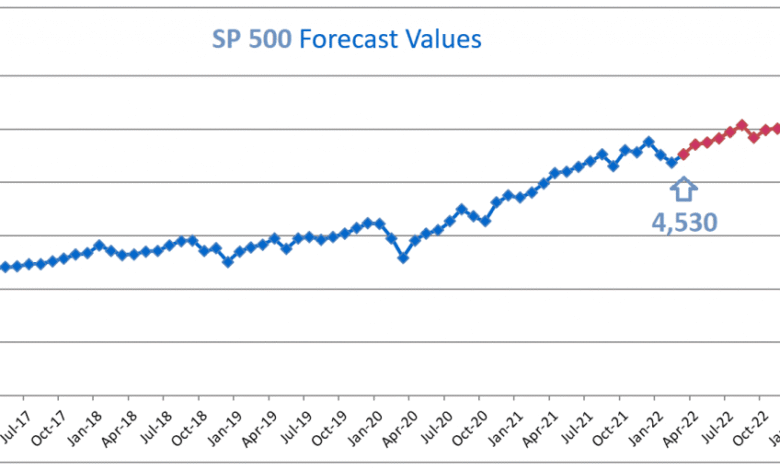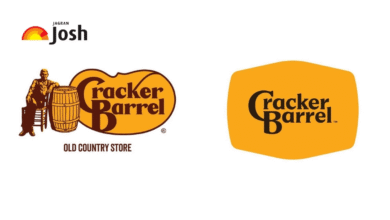HSBC S&P 500 Forecast Cut: What It Means for Investors

The HSBC S&P 500 forecast has recently seen a notable adjustment, as the banking giant becomes the latest institution on Wall Street to lower its year-end target due to persisting tariff uncertainty. This development underscores a cautious market outlook amidst escalating trade tensions and economic challenges. Nicole Inui, HSBC’s head of equity strategy for the Americas, has revised the S&P 500 year-end target down from 6,700 to 5,600, signaling a meager projected increase of just 1% for the index by year-end. The shift in HSBC’s estimates comes alongside a reduction in earnings expectations, which may influence investor sentiment and strategies moving forward. As the ripple effects of tariff ramifications continue to unfold, stakeholders must remain vigilant about the evolving dynamics within the equity market and adapt their investment approaches accordingly.
In light of the recent shifts in market analysis, the HSBC prediction regarding the S&P 500 has attracted attention, especially as it reflects broader economic conditions and trade policy implications. This revised estimate by HSBC highlights the bank’s perspective on market trajectories and the upcoming challenges investors may face amid political and economic uncertainties. With discussions of recession and stagflation becoming increasingly relevant, the adjusted targets within Wall Street indicate a prudent approach to the current climate. Moreover, as trading relationships become strained and potential risks loom large, market analysts are emphasizing the importance of strategic adjustments. Investors are encouraged to stay informed on developments, especially concerning tariffs and their impact on key sectors.
HSBC’s Revised S&P 500 Year-End Forecast
HSBC has recently adjusted its S&P 500 year-end forecast significantly, dropping it by over 16% to a target of 5,600. This forecast indicates a lack of expected growth in the equity market, suggesting that investors should prepare for a turbulent economic environment. The latest forecast, expressed by Nicole Inui, head of equity strategy for the Americas, emphasizes ongoing tariff uncertainties as a critical factor inhibiting economic growth and business performance. The current status of the S&P 500, only slightly above its projected end-of-year value, reflects a cautious approach to market investments.
Inui’s adjusted earnings estimates for the S&P 500, now set at $255, suggest a below-consensus forecast that anticipates only 6% annual growth for the index. This downbeat outlook is indicative of the broader market challenges posed by tariff disruptions, supply chain issues, and the potential for sustained economic pressures. Investors are advised to consider carefully their positions in a market characterized by such uncertainty, which could lead toward underperformance in equity returns.
Impact of Tariff Uncertainty on Market Outlook
The tariff uncertainty that has developed as a result of President Trump’s policy changes profoundly impacts the U.S. market outlook. As companies face higher costs and potential supply chain disruptions, there is increasing skepticism about their ability to meet earnings projections. The Port of Los Angeles has already reported a steep decline in shipping volume due to the apprehensions surrounding these tariffs. This situation exacerbates concerns about the overall health of the U.S. economy and contributes to market volatility, prompting many strategists to revise their forecasts.
Investors should remain vigilant as fluctuations in trade policy can lead to much broader economic effects. The decline in trading activities portends a slowdown that could have lasting implications, especially when it comes to earnings and corporate profitability. Analysts, including those at HSBC, are closely monitoring these developments to gauge their impact on the overall market, with elevated risks possibly leading to additional forecast adjustments in the upcoming months.
Equity Strategy Amid Uncertain Times
Given the current economic climate, HSBC’s Nicole Inui recommends a defensive equity strategy for investors. Historically, uncertain periods in the market have led to pullbacks averaging around 25%, with more severe scenarios potentially causing a decline of up to 30%. This situation particularly highlights the necessity for investors to position their portfolios in sectors that traditionally fare better during economic downturns, such as consumer staples and healthcare. By focusing on more resilient equities, investors may mitigate potential losses during market contractions.
In addition, commodities can present an attractive investment opportunity during stagflation, characterized by stagnant growth and rising inflation. The diversification into these areas might provide a hedge against inflationary pressures that are likely to persist alongside the tariff-related uncertainties currently affecting the market. Thus, the ability to adapt strategies in alignment with economic signals is crucial during these challenging times for investors.
HSBC’s Optimistic and Pessimistic Scenarios
HSBC’s insights reflect a duality of sentiment regarding future market performance, as fears of recession coexist with the hope for recovery once tariff and inflation issues diminish. Nicole Inui points out that the conversation surrounding the market tends to oscillate between the prospects of recession and the possibility of a robust recovery, dependent on external economic factors. This uncertainty necessitates a flexible strategy that can accommodate changing conditions, further emphasizing the significance of financial agility within investment strategies.
HSBC’s forecast stands in stark contrast to that of other financial institutions, which may still harbor optimism regarding specific market segments. As firms like Bank of America Merrill Lynch and Goldman Sachs revise their targets downward but remain within a close range to HSBC’s new forecast, it indicates a consensus on the need for caution amid prevailing uncertainties. Investors must consider these varying perspectives while also acknowledging the dominant trend towards a more careful appraisal of equities overall.
The Role of the Federal Reserve in Market Stability
The Federal Reserve’s actions, specifically the anticipated rate cuts, are set to play a pivotal role in the stability of the markets amid the challenges presented by tariffs and inflation. Nicole Inui has indicated an expectation for a Federal Reserve rate reduction, likely to occur in June. Such moves by the central bank could bolster market confidence, but the market narrative is likely to continue fluctuating until there is clarity regarding tariff implementation and its effects on the economy.
Rate cuts historically aim to stimulate economic growth by making borrowing cheaper, which can, in turn, influence consumer spending and investment decisions. As the market grapples with increased uncertainty from external pressures, the Federal Reserve’s response will be critical. Investors should closely follow the Fed’s policy adjustments, as these developments could provide a clearer direction for the S&P 500 and overall market sentiment.
Risk Management Strategies in a Turbulent Market
In the face of evolving market conditions driven by tariff uncertainty and potential economic slowdowns, risk management becomes more important than ever. Investors should evaluate their exposure to volatility and consider diversifying their portfolios to spread risk across various asset classes. By employing risk management strategies such as stop-loss orders or hedging with options, investors can better position themselves to weather potential downturns that analysts predict could reach significant depths.
Moreover, maintaining a focus on quality investments—passing up highly speculative stocks in favor of those with stable earnings can prove advantageous in turbulent conditions. By selecting equities that demonstrate resilience against economic headwinds, investors may buffer against downturns while still capitalizing on potential future growth opportunities. Thus, through thoughtful risk management, one can navigate the complexities of current market challenges effectively.
Consumer Staples and Healthcare Stocks: Safe Havens
During periods of heightened economic uncertainty, sectors like consumer staples and healthcare have historically provided more stable investment opportunities. These sectors typically remain resilient as consumers continue to purchase essential goods and services irrespective of economic conditions. Consequently, investing in companies within these sectors can yield more consistent returns, irrespective of broader market volatility.
HSBC’s focus on these defensive sectors aligns with the cautious stance recommended amidst ongoing uncertainties. Analysts highlight that consumer goods and healthcare stocks are likely to outperform during challenging times, which is particularly relevant considering the current environment surrounding tariffs and supply chain disruptions. Building a portfolio with a significant emphasis on these areas could enhance overall stability and yield positive performance against a backdrop of economic headwinds.
Sector Rotations in Response to Economic Conditions
As economic conditions shift due to factors like tariff uncertainty and the potential risk of recession, strategic sector rotations may become necessary for astute investors. The dynamics of the market often lead to rotations between sectors as some thrive during economic challenges while others face headwinds. For example, when inflation rises, investors may lean towards sectors such as commodities or utilities that perform better under those conditions.
HSBC’s latest assessments point to the necessity of being opportunistic in reallocating investments in response to prevailing conditions. By paying close attention to sector performances and adjusting portfolios accordingly, investors can enhance their overall returns. This strategic adaptability is critical, especially when responding to unpredictable markets shaped by policy changes and economic pressures.
Global Market Influences on U.S. Equities
U.S. equities do not exist in a vacuum; global market influences significantly impact their performance. Factors such as international trade agreements, currency fluctuations, and geopolitical events can profoundly sway investor sentiment and market trends. As HSBC and other banks factor these global elements into their forecasts, it becomes apparent that U.S. investors must remain alert to developments beyond their borders.
For instance, tariff uncertainties with key trading partners like China can not only affect direct business dealings but also create ripple effects through the global supply chain. Such interconnectedness requires investors to adopt a broad view of market conditions, considering how international dynamics can alter the landscape of U.S. equity markets. Therefore, staying informed on global issues is crucial for anyone looking to successfully navigate investments in U.S. stocks.
Frequently Asked Questions
What is HSBC’s latest S&P 500 year-end forecast and what factors influenced this change?
HSBC recently lowered its S&P 500 year-end forecast from 6,700 to 5,600, a reduction of over 16%. This adjustment is attributed to ongoing tariff uncertainty and its effects on businesses, particularly in relation to GDP growth and earnings expectations.
How does HSBC’s S&P 500 forecast compare to other banks on Wall Street?
HSBC’s S&P 500 forecast is among the most cautious on Wall Street. For instance, both Bank of America Merrill Lynch and Goldman Sachs have also reduced their S&P 500 year-end targets, indicating a broader trend in adjusting estimates due to tariff-related concerns.
What is the projected earnings estimate for the S&P 500 according to HSBC?
HSBC has reduced its S&P 500 earnings estimate for the year by 5%, projecting it at $255 per share. This forecast reflects a below-consensus outlook with only 6% anticipated annual growth.
What market conditions are currently affecting HSBC’s S&P 500 forecast?
HSBC’s S&P 500 forecast is influenced by ongoing tariff uncertainties, particularly with key trading partners like China, and broader concerns about potential supply chain disruptions and their impact on market stability.
What investment strategy does HSBC recommend in light of their S&P 500 forecast?
Given the uncertain market conditions reflected in its S&P 500 forecast, HSBC recommends a defensive investment stance. Historically, uncertain periods have led to significant market pullbacks, and investors are advised to consider sectors like consumer staples and healthcare that typically perform well during downturns.
What are the potential implications of tariff uncertainty on the S&P 500 forecast?
Tariff uncertainty has significant implications for the S&P 500 forecast, as it can lead to slower GDP growth, reduced earnings expectations, and heightened market volatility. Investors are advised to stay informed about tariff changes as they can impact overall market valuations.
How does HSBC’s S&P 500 year-end target reflect broader economic expectations?
HSBC’s S&P 500 year-end target of 5,600 suggests a stagnant market trend with minimal growth, reflecting concerns over GDP slowing to 1% and increasing economic uncertainty. This cautious forecast underlines the bank’s anticipation of potential recessions or stagflation impacting market conditions.
What historical market trends does HSBC reference in relation to their S&P 500 forecast?
HSBC references historical trends where uncertain periods often result in market pullbacks of up to 25%, and severe recessions can cause declines of about 30%. This historical context supports their cautious S&P 500 forecast amidst current economic challenges.
| Key Point | Details |
|---|---|
| Forecast Adjustment | HSBC lowered its S&P 500 year-end forecast from 6,700 to 5,600. |
| Projected Market Value | The new forecast indicates only a 1% increase above the current value of 5,528.75. |
| Earnings Estimate | S&P 500 earnings estimate reduced by 5%, projected at $255 with only 6% annual growth. |
| Economic Insights | Ongoing tariff uncertainties may slow GDP growth to 1% Q4/Q4, limiting valuations. |
| Investment Strategy | Inui recommends a defensive stance for investors amidst market volatility. |
| Historical Trends | Market pullbacks during uncertain times can reach up to 25%; severe recessions may see declines of 30%. |
| Sector Recommendations | Consumer staples and healthcare stocks may perform well during recessions. |
| Tariff Impact | Significant reductions in shipping volume reported at key ports due to tariff impacts. |
Summary
The HSBC S&P 500 forecast indicates a cautious outlook for the year as the bank has adjusted its year-end target significantly. Despite a predicted slight increase in the index, concerns over tariff uncertainties and their implications for GDP growth and earnings present challenges for investors. With the suggestion of a defensive investment approach and a focus on stable sectors, investors are advised to navigate this period of volatility carefully.




